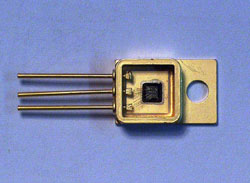SiC for high temperature electronics
Significant advances in silicon (Si)-based high temperature electronics had a considerable impact on many key industrial sectors. In the oil and gas sector it has been increasingly important in prolonging the life of hydrocarbon reservoirs by increasing extraction efficiencies, thus lowering the cost per barrel of oil. In the aerospace and automotive sectors the main technology driver has been the move towards higher power and higher temperature operation. However, Si-based power devices are not able to meet the continuous demand for higher current and voltage blocking capacity, and moreover even higher temperature. Within the ATHIS project, silicon carbide (SiC) has been identified as a material with the potential to replace Si due to its superior electrical and thermal properties. Project partners at the Centro Nacional de Microelectronica in Spain experimentally evaluated the performance of the most advanced SiC power devices, SiC-based Schottky diodes. SiC-based Schottky diodes exhibit high thermal conductivity and high critical breakdown field strength. These SiC power electronic devices should therefore be able to operate in extreme environments and under a wide range of operating temperatures. Taking commercially available Schottky diodes one step further, titanium (Ti) widely used for rectifying contacts on Schottky diodes and reducing power dissipation was replaced by nickel (Ni). Current state-of-the-art silicon pn-junction diodes were electrically tested and characterised as a function of temperature. Comparisons with the results of the same tests performed with the improved Schottky diodes revealed prestigious qualities of being more than compact and lighter. With low switching losses, they proved to be ideal for high-voltage electronics applications, such as power electronics converters.



